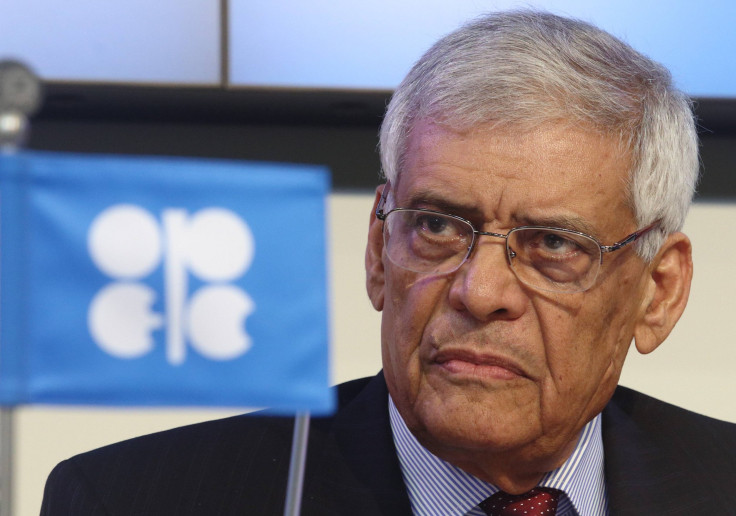OPEC Meeting Preview: Will Slump In Oil Prices Push OPEC To Slash Production?

Wall Street will pay close attention to the way OPEC addresses the recent slump in oil prices, as weaker economic growth and a strengthening U.S. dollar tradtionally create headwinds for oil prices. To keep already-low oil prices from sinking even further, OPEC may be forced into its first production pullback since 2009.
After topping $115 a barrel in June, Brent crude, a benchmark for global oil, has declined 32 percent and now hovers around $78 a barrel. Experts expect OPEC to announce a small decrease in production levels at its meeting in Vienna, Austria on Thursday. The group, whose 12 member countries supply 40 percent of the world's oil, forecasts crude will fall to 29.2 million barrels per day in 2015 as a result of strong non-OPEC supply growth, according to the organization's market projections.
While OPEC's member countries produce about 40 percent of the world's crude oil, OPEC's oil exports represent about 60 percent of the total petroleum traded internationally, and therefore have great influence over international oil prices.
"We expect OPEC to announce at most a modest reduction to current production on Nov. 27," Goldman Sachs analysts Damien Courvalin and Anamaria Pieschacon said in a research note. But the analysts warned that the pullback can only be achieved by reducing output slowly.
"Any large cut that would lead to a large price rally would be self-negating, as it would enable U.S. producers to [capitalize on anticipated] 2015 production and sustain elevated production growth," said Courvalin and Pieschacon.
In its last meeting in June, the OPEC Secretary General indicated that oil prices around $95 to $110 per barrel represented a fair range. But given the drop in oil prices since then, OPEC is under increasing pressure to cut production to prevent further price drops. Earlier this month, OPEC published its World Oil Outlook and cut forecasts for the amount of oil it needs to supply through 2035. Together with a strengthening U.S. dollar and lower economic growth forecasts, analysts from Deutsche Bank expect that OPEC will be compelled to take action.
“The uncertainty is whether OPEC can coordinate agreement in time or whether it will only sanction production cuts early in the new year,” Deutsche Bank strategists Michael Lewis and Michael Hsueh said in a research note. A quota reduction of 1 million barrels per day would be necessary to restore confidence to the market and help stabilize oil prices, Deutsche Bank analysts said. “According to our estimates of individual country quotas, Saudi Arabia would be liable to the largest production cut followed by Kuwait and the UAE, while Iran and Libya would be insulated from any reduction,” Lewis and Hsueh said.
The price of oil has steadily been on the decline since June. Brent crude dipped below $80 a barrel for the first time in four years on Nov. 13, while West Texas Intermediate crude, a benchmark in U.S. oil pricing, fell below $80 on Oct. 27, its lowest since June 2012. Since then, the price of U.S. oil has continued to decline and hit a low of $73.25 per barrel on the New York Mercantile Exchange (NYMEX) on Nov. 14, the lowest level since September 2010.
If OPEC doesn’t agree to cut output, some analysts see oil falling beyond its Nov. 14 low to $60. However, others expect oil to rally around $80 a barrel.
"I don’t expect to see a major production cut from OPEC. I expect to see oil rally back around $80, and I even think it could get as high as $82 a barrel," Jeff Grossman, president of BRG Brokerage Inc., said from the NYMEX floor Tuesday. “I’m the contrarian. I think this market has seen the lows in the near term, and I don’t think it’s going that much lower. You’ll see oil rally to $80 a barrel before you see it hit $70.”
Some fear how much OPEC could fracture, but at these lows, alternative fuel sources such as shale oil will suddenly become much less economically feasible at current levels, Grossman said. “Now they’ll scale back on exploration, and that isn’t added to the equation.”
One important factor driving the price of oil in the near term: Weather. “If there’s extremely cold weather in the Northeast, you’ll see big drawdowns [of supply] in heating oil, and if there’s extreme weather in the Midwest, you’ll see big drawdowns in natural gas," Grossman said.
Ahead of Thursday’s meeting, Brent crude for January delivery edged up 0.04 percent on Wednesday, to $78.36 a barrel. Meanwhile, West Texas Intermediate crude oil futures for January delivery lost over 2 percent on Tuesday to close at $74.09 a barrel.
“If a quota reduction cannot be agreed upon by this week, then in the absence of any fresh supply disruptions, we believe some corrective action by OPEC will be essential in the early part of next year,” Lewis and Hsueh said.
© Copyright IBTimes 2024. All rights reserved.












